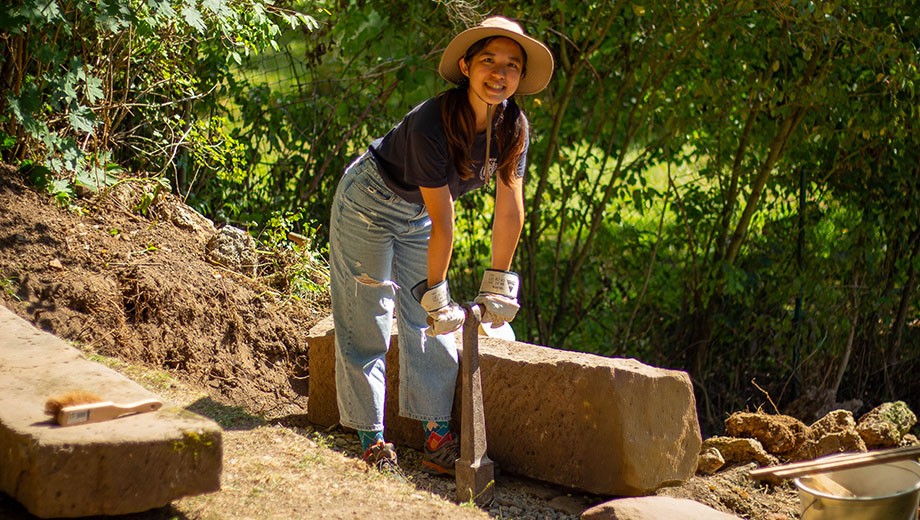Liang-Chun Wu, AM’24, studied architecture at the Chinese University of Hong Kong but lost her interest in designing modern structures of concrete and steel. Instead, she turned toward researching older structures such as an eleventh-century Spanish monastery.
Wu’s burgeoning interest in historical buildings led her to work on archaeological excavations, and she discovered that she wanted to learn more technical skills. Through the Master of Arts program in Digital Studies of Language, Culture, and History (DIGS), she learned computational skills to conduct fieldwork.
“The DIGS program allowed me to apply computational skills to address research questions in the humanities, particularly leveraging LLMs [large language models] and NLP [natural language processing] for historical research,” she says. “The coding and database management skills I developed in this program, combined with my past experiences, led me to my current role as the digital collections curator at the Center for the Art of East Asia.”
DIGS is the latest master’s degree program offered in the Division of the Arts & Humanities. Students can do either a one-year general master’s or a two-year degree with a specialization and thesis project in one of the following areas:
- Artificial Intelligence and Language
- Digital Art and Archaeology
- Digital Media and Extended Reality
- Digital Texts and Culture
DIGS joins three other master’s programs in the division: the one-year Master of Arts Program in the Humanities (MAPH), the two-year program through the Center for Middle Eastern Studies, and the two-year Master of Fine Arts degree.
“Our pedagogical strategy is to integrate the teaching of digital methods with research and practice in the arts and humanities,” says David Schloen, DIGS’s faculty director and the John A. Wilson Professor of Archaeology and Digital Humanities in the Institute for the Study of Ancient Cultures and the Department of Middle Eastern Studies. “Computational methods can be responsive to the age-old concerns of humanities scholars to understand and interpret products of human culture.”
For example, Schloen says the project Florence Illuminated—led by Niall Atkinson in Art History—illustrates what digital tools can do for humanists. The underlying technology for the project is the Online Cultural and Historical Research Environment (OCHRE) computational platform. Through OCHRE, the Florence Illuminated team generates connections between historical documents preserved from Florence in 1427, including tax returns, church records, itemized household inventories, service records of military families, memberships in professional associations, and more. The project brings together data from several digital humanities projects focused on historical Florence, supporting research in many fields—for instance, by visualizing bygone sites in ways that are meaningful to today’s art and architectural historians.
DIGS students come from many backgrounds and experiences. For three years, Luis Fialho taught English to high school students while earning a master’s of education degree from Springfield College. He realized the importance of developing a high school curriculum that incorporates digital literacy into the humanities.
But first Fialho needed to learn data-management skills. Now he is enrolled in the two-year DIGS program and finds the mixture of math and humanities compelling. Fialho says it was one of the few master’s programs that aligned with his interests.
“Students in the humanities disciplines don’t traditionally have a lot of engagement with computational science,” Schloen says, “but their skills in languages and culture are great preparation to learn it.”

